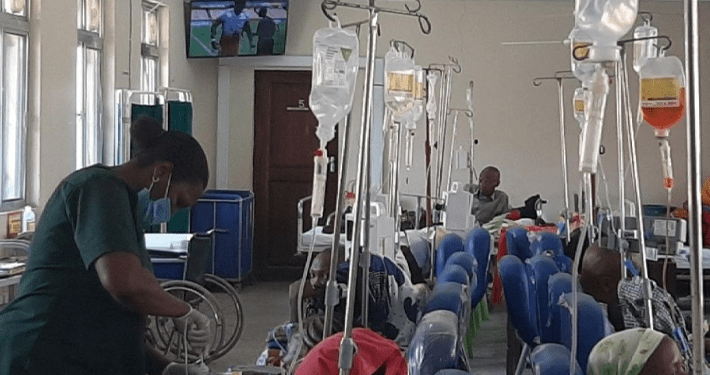The World Health Organisation has ramped up its readiness to assist the government in investigating and responding to the situation following reports of suspected viral haemorrhagic fever cases in Tanzania.
In a statement on Thursday, the UN health agency said national health authorities had dispatched a team of experts to the Kagera region, where the cases of Marburg virus have been reported.
WHO is mobilising technical expertise and logistical supplies to support these efforts. Early notification of the investigation’s outcome is crucial for a swift response.
“We stand ready to support the government in its efforts to investigate and ensure that measures are in place for an effective and rapid response.
“With the existing national capacities built from response to previous health emergencies, we are able to swiftly scale up efforts to protect communities as well as play our advocacy role for international support and solidarity,” said WHO regional director for Africa, Matshidiso Moeti.
At this time, WHO does not recommend any travel or trade restrictions with Tanzania.
Tanzania previously faced an outbreak of the Marburg virus in March 2023, also in the Kagera region. The outbreak was controlled and declared over in less than two months due to strong measures.
Marburg virus disease, a highly virulent illness causing hemorrhagic fever, belongs to the same family as Ebola.
Symptoms begin abruptly with high fever, severe headache, and malaise, potentially progressing to severe hemorrhagic symptoms within seven days. The virus spreads through direct contact with bodily fluids of infected individuals, surfaces and materials.
There is no licensed treatment or vaccine for Marburg virus disease. Supportive care, including rehydration and symptom treatment, improves survival rates.
Previous outbreaks have occurred in Angola, the Democratic Republic of the Congo, Ghana, Kenya, Equatorial Guinea, Rwanda, South Africa, and Uganda.
In a related development, UN aid teams in northern Mozambique say they are doing their utmost to provide help to communities hit by two deadly cyclones in a month.
Tropical cyclone Chido —which devastated the French territory of Mayotte in the Indian Ocean, leaving thousands feared dead —hit Cabo Delgado province on December 15, killing 120 people and injuring more than 800, after smashing into Mecufi district and Nampula province.
Wind gusts exceeded 200 kilometres per hour and left a high number of houses either partially or completely destroyed. In all, some 400,000 people were affected.
Paola Emerson of the UN Aid Coordination Office said 12 more named storms are predicted until April alone. She said that “food is the main concern” for people, as three million are already food insecure across Mozambique.
Ms Emerson added, “All month long, UN humanitarians have been providing assistance complementing government efforts. As of Saturday, the World Food Programme and its partners had reached more than 190,000 people in five districts with one-week food rations.
“A vaccination campaign to deal with cholera was launched on 6 January, and it has reached 86 per cent of the nearly 200,000 people that were targeted.”
To date, Ms Emerson mentioned that 109,000 people had received shelter and non-food items, including tarpaulins, blankets, ground mats, and cookware, while 60,000 have received urgent medical care and disease prevention.
The UN aid official said that no fewer than 50,000 people were affected by the Dikeledi storm, and more than 7,000 homes were destroyed, along with 82 classrooms and 142 acres of agricultural land.
(NAN)






